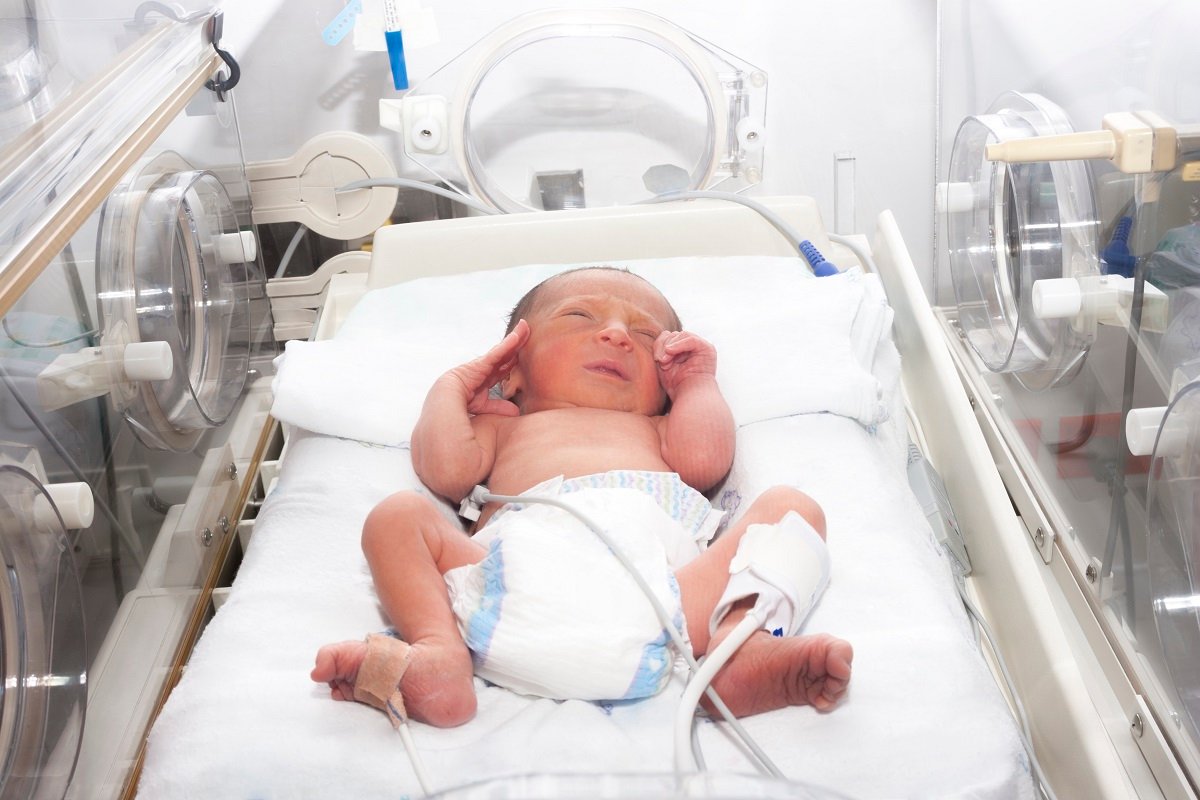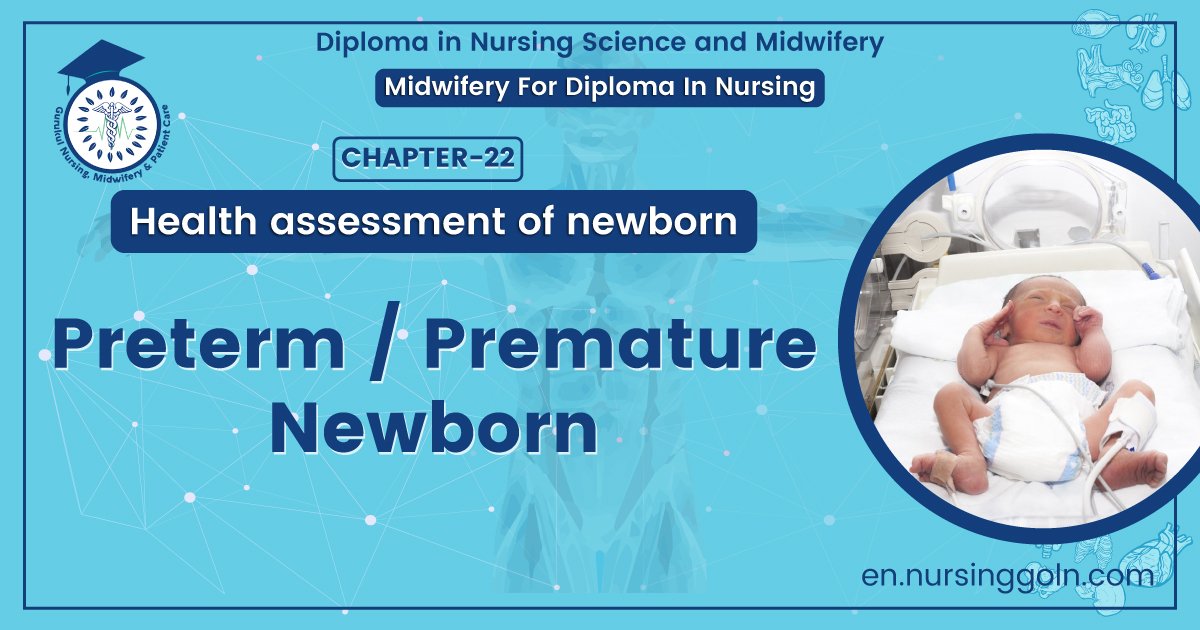Preterm premature newborn- This course is designed to understand the care of pregnant women and newborn: antenatal, intra-natal and postnatal; breast feeding, family planning, newborn care and ethical issues, The aim of the course is to acquire knowledge and develop competencies regarding midwifery, complicated labour and newborn care including family planning.
Preterm premature newborn
Preterm baby:
A baby born before 37 completed weeks of gestation calculating from the first day of last menstrual period is known as preterm baby.
Or
The term refers to a baby bom before a gestation period of 37 weeks. This replaces the old term prematurity.

Figure: preterm / premature newborn
Predisposing factors of preterm baby
1. Poor nutritional status of the mother.
2. Maternal illness like toxemias, antepartum hemorrhage (APH), anemia and chronic infections.
3. Excessive smoking, drugs.
4. Overwork, fatigue, mental tension etc
5. Twinning.
6. Increasing parity.
7. High altitude.
Causes of preterm baby
1. Maternal history of preterm birth, spontaneous abortion, incompetent cervix or other uterine anomalies.
Features of preterm baby
10. Small chest.
12. Liver, spleen and kidneys are often palpable
Management of the preterm neonate with nursing care
Prevention of preterm baby
- Quit smoking beforepregnancy or as early as during pregnancy.
- Avoid drinking alcohol and using recreational drugs.
- Advise health care provider of all medications that are taking, because some may be harmful to pregnancy and might need to be phased out.
- Maintain an adequate amount of weight gain throughout pregnancy, depending on what health care provider thinks is right for women.
- Eat a nutritious and well-balanced diet.
- Avoid heavy lifting and work, and standing for long periods of time.
- Minimize the stress in life whenever possible, and deal with stress using relaxation techniques, exercise, nutrition, and rest.
- Go to prenatal classes.
- Avoid infections as much as possible.
- Premature delivery due to incompetent cervix can be reduced with a surgical procedure that closes the cervix from the 14th week of pregnancy until the ninth month.
- Some chronic maternal illnesses can lead to premature birth if they are not treated properly during pregnancy.
- They need to be appropriately managed during pregnancy.
- If health care provider thinks women are high risk for premature labour, she may suggest that they refrain from having sexual intercourse.

Complications of preterm baby
1. Asphyxia because of immaturity.
2. Cerebral haemorrhage
3. Hypothermia.
4. Pulmonary syndromes such as pulmonary oedema, intra-alveolar haemorrhage and respiratory distress syndrome.
5. Foetal shock following rough handling or rough resuscitation.
6. Jaundice because of hepatic insufficiency and inadequate excretion of bile.
7. Heart failure.
8. Oedema.
9. Infections such as bronchopneumonia, meningitis and gastroenteritis.
10. Anaemia due to lack of stored iron, hypofunction of bone marrow and excessive haemolysis.
11. Retrolental fibroplasias (Retinopathy of prematurity).
12. LBW baby
Or (Another answer)
A. Short-term complications:
- Breathing problems.
- Heart problems.
- Brain problems.
- Temperature control problems.
- Gastrointestinal problems.
- Blood problems.
- Metabolism problems.
- Immune system problems.
B. Long-term complications:
- Cerebral palsy.
- Impaired learning.
- Vision problems.
- Hearing problems
- Dental problems.
- Behavioral and psychological problems.
- Chronic health issues.
Difference between preterm and term baby

Read More.
